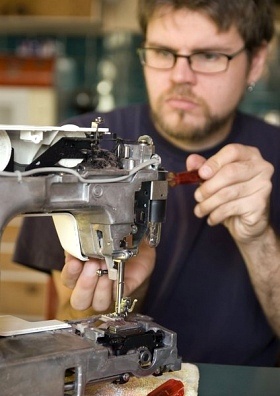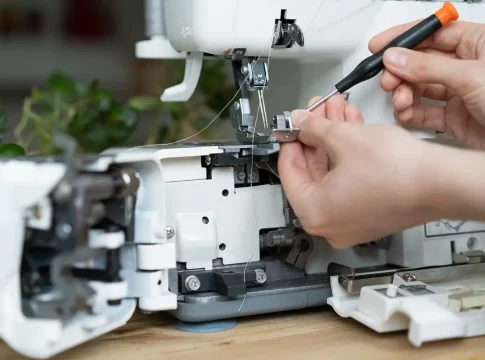Don’t despair if your beloved sewing machine seems to be on the fritz! Contrary to popular belief, you don’t need to be a mechanical whiz to tackle some basic repairs yourself. Many sewing machine owners send their machines off to repair shops unnecessarily, unaware that they can fix common problems at home. This guide will equip you with the knowledge to become a sewing machine repair DIYer!
Stay Calm and Assess the Damage
First things first: take a deep breath! Panicking won’t mend a broken machine. The good news is that many sewing machine problems have simple solutions you can implement yourself.
It’s important to remember that sewing machines come in various brands and models, each with its own potential quirks. While we can’t cover every single scenario here, this guide will focus on the most common issues related to stitching problems.

Troubleshooting Stitching Issues
The way your sewing machine performs can vary depending on the fabric you’re using. Sometimes, you might encounter issues like excessive tension or difficulty sewing specific materials. This is where understanding tension adjustment comes in handy.
Balancing Tension: A Thread-Colored Tale
Here’s a simple trick to balance your tension: use contrasting thread colors for the bobbin and the top spool. Fold a scrap of fabric in half and sew a straight line along the bias (diagonal fold). Gently pull the stitched fabric apart as if you’re trying to rip it.
- If the bobbin thread breaks, your upper tension is too loose.
- If the top thread snaps, it’s too tight.
- If neither thread breaks, or both break simultaneously, then your tension is balanced.
Adjust the tension knobs accordingly and repeat the test until you achieve a balanced stitch.
The Case of the Unruly Bobbin
Another culprit behind sewing woes can be an improperly wound bobbin. If your machine seems to struggle due to bobbin issues, here’s what to check:
- Bobbin Fullness: Ensure your bobbin isn’t overfilled, which can cause tightness (unless your machine has an automatic bobbin shut-off feature).
- Winding Consistency: Make sure the thread is evenly distributed across all layers of the bobbin. You can achieve this by using a sewing machine with a built-in bobbin winder, or by using a separate bobbin winder tool.
- Thread Weight Match: Verify that the thread weight on the bobbin matches the thread weight on the spool. Using mismatched weights can lead to tension problems and uneven stitching.
The Mighty (But Often Overlooked) Needle
This might seem like a basic point, but you’d be surprised how often a misplaced needle can cause seemingly complex problems. If your machine is struggling to pick up the bobbin thread or skipping stitches, the culprit might be a simple needle placement issue:
- Flat Side Matters: Many needles have a flat side. Ensure the flat side of the needle faces the back of your machine (this may differ by brand/model, so consult your manual if unsure).
- Groove Guidance: Needles without a flat side might have a groove where the thread sits. Make sure this groove faces the correct direction, which is usually towards the front of the machine.
Beyond the Basics
While this guide focuses on common, DIY-friendly repairs, it’s important to acknowledge that some problems require professional attention. Here are some signs that your sewing machine might need a visit to the repair shop:
- Strange Noises: If your machine is making unusual grinding, clunking, or screeching sounds, it could indicate internal component wear or damage.
- Electrical Issues: Sparks, burning smells, or flickering lights are all red flags that point towards potential electrical problems. Never attempt to fix electrical issues yourself – seek professional help immediately.
- Broken or Bent Parts: If you notice any broken or visibly bent components within the machine, like the needle bar or tension discs, leave the repairs to a qualified technician.
By familiarizing yourself with basic troubleshooting techniques, you can tackle many sewing machine problems at home, saving time and money. Remember, a little knowledge goes a long way in keeping your sewing projects running smoothly! Happy sewing!
